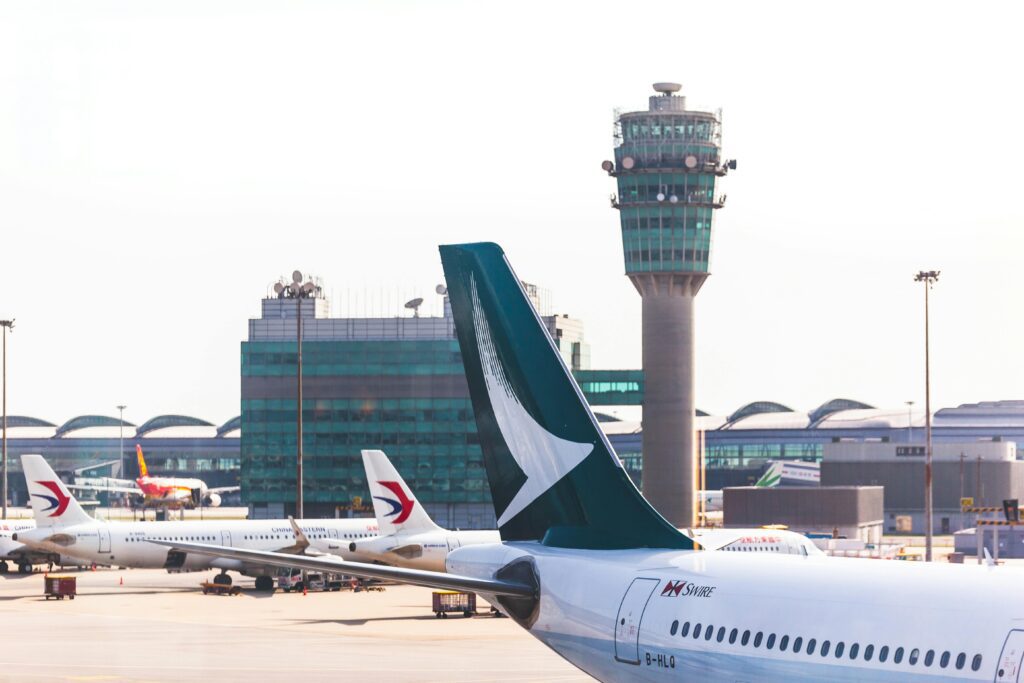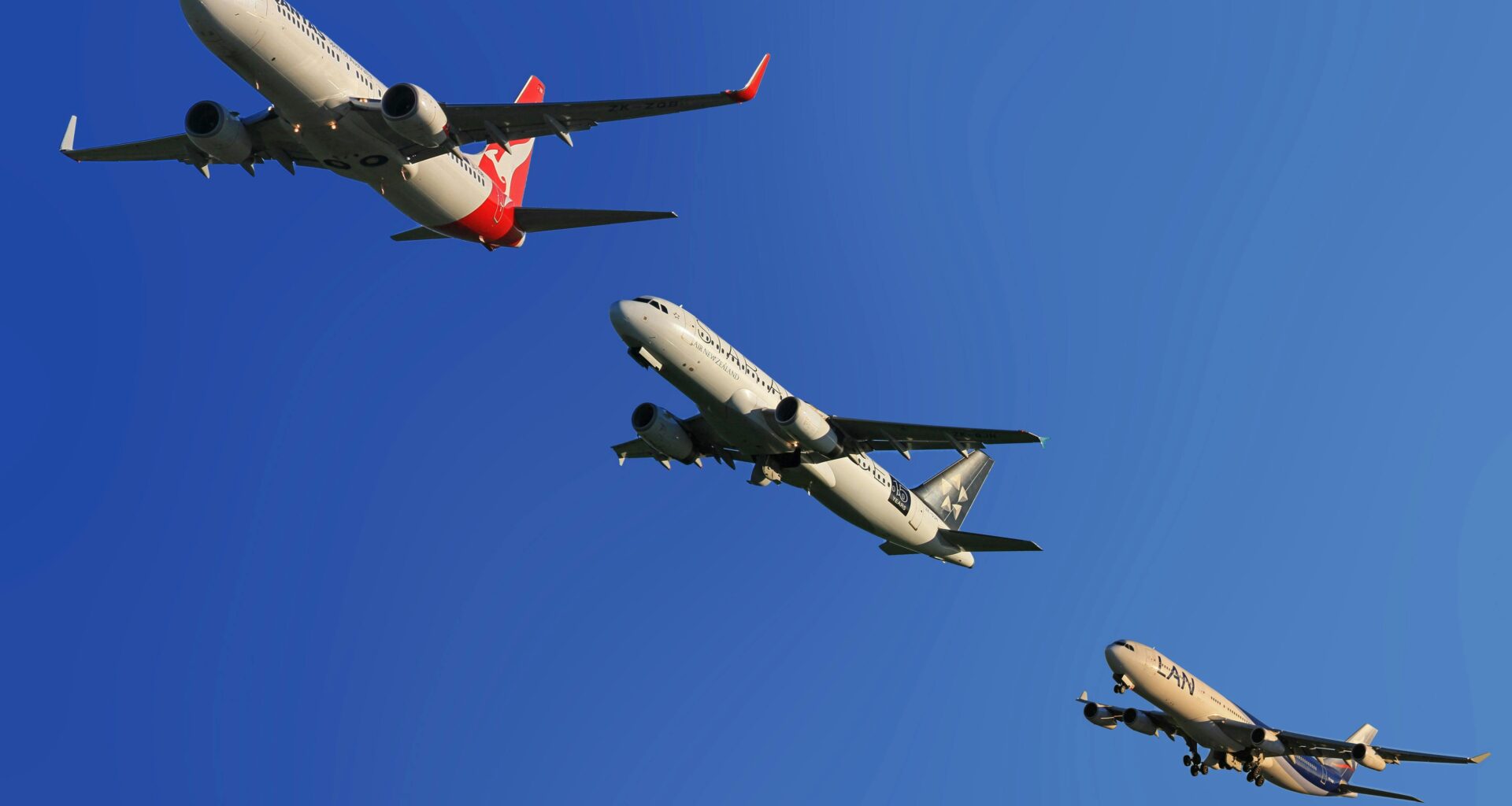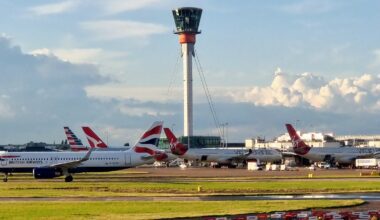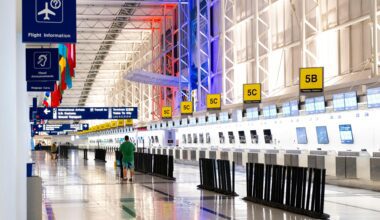In the messy, high-altitude world of airline business, carriers don’t just fly solo. They flirt, team up, and sometimes go all the way, sharing profits, planes, and even passengers. Airline partnerships are explained in a way that finally makes sense (and with zero corporate fluff).
Here’s your WingTips-approved guide to decoding the skies, complete with real-life airline examples, because, yes, this drama is very much happening at your gate right now.
In This Post
Interline Agreements: The One-Night Stand
Interline agreements are the most basic kind of hook-up. They let airlines book passengers on each other’s flights and transfer baggage, but they don’t coordinate anything beyond that.
- Example: Emirates and Alaska Airlines have an interline agreement that allows you to check a bag through from Dubai to a small U.S. city, even if you switch airlines halfway.
- Still friends in the morning? Barely. No lounge access, no elite perks, just logistics.
Codeshare Agreements: The Casual Relationship
One airline puts its flight number on another airline’s plane. You think you’re flying one carrier, but you’re really flying another.
- Example: Book a flight from London to Tokyo on British Airways, which might actually be operated by Japan Airlines (JAL). Same alliance, different plane.
- Perks? Usually earn points and miles, but service levels may vary.
- Annoying? Only when your seat selection mysteriously vanishes into the void.
Alliance Memberships: The Open Relationship
This is your global loyalty polycule. Alliances are large airlines collaborating loosely, sharing lounges, status perks, and streamlined connections.
- Examples:
- Star Alliance: Lufthansa, Singapore Airlines, United
- Oneworld: British Airways, Qatar Airways, American Airlines
- SkyTeam: Air France, KLM, Delta
- Good for passengers? Absolutely. Elite status goes further, and your loyalty points get more mileage.
- Downside? Don’t expect consistent service across the board. SkyTeam, in particular, is known for its diverse standards.
Franchise Agreements: The Secret Identity
One airline operates flights under another’s brand, mimicking its style, service, and uniforms like a theme park clone in the air.
- Example: Sun-Air of Scandinavia operates regional flights in Denmark under the British Airways brand (yes, really). You’ll see BA logos, but it’s not actually BA.
- Why it exists: To maintain brand reach in niche markets without operating there directly.
- Passenger experience? Surprisingly decent… if you’re not expecting a full-size jet.

Wet Leasing (ACMI): The Weekend Fling
Airline A rents a plane, crew, maintenance, and insurance from Airline B. The rental is Short-term and often seasonal. It’s aviation’s version of borrowing a mate’s flat when your own boiler explodes.
- Example: British Airways sometimes leases aircraft from Finnair or Iberia during summer surges. That’s why your “BA“ flight might appear as a random white jet with a mystery crew.
- Upside: Keeps schedules on track.
- Downside: No brand consistency, and good luck using your upgrade voucher.
Equity Stakes: The Messy Ex
Sometimes, airlines become full-blown soap operas and buy into each other. It’s high risk, high drama, and when it fails, it really fails.
- Example: Etihad invested heavily in Alitalia, Air Berlin, and Jet Airways. All three collapsed. Etihad’s therapist is probably on speed dial.
- When it works: Delta owns a stake in Virgin Atlantic and operates transatlantic routes with them pretty successfully.
- When it doesn’t, You get stranded. Literally.
Joint Ventures: The Married Couple with a Shared Mortgage
This is as committed as it gets without a merger. Joint ventures involve revenue sharing, joint scheduling, and often coordinated pricing on specific routes.
- Examples:
- British Airways + American Airlines: Joint venture on transatlantic routes.
- Lufthansa + United + Air Canada: JV for Europe-North America routes.
- Qantas + Emirates: JV between Europe and Australia.
- Passenger perks: Better schedules, easier transfers, more loyalty benefits.
- Downside: Less competition. Prices don’t always drop just because the airlines “love each other.”
Final Boarding Call
Whether it’s a casual codeshare or a full-on financial entanglement, airline partnerships explained properly can help you book smarter, manage expectations, and understand why your “Qatar Airways” flight is being operated by “Sri Lankan with snacks from British Airways.”
And always, always check who’s actually operating your flight. Because in aviation, the name on your ticket isn’t always who’s taking you home.







